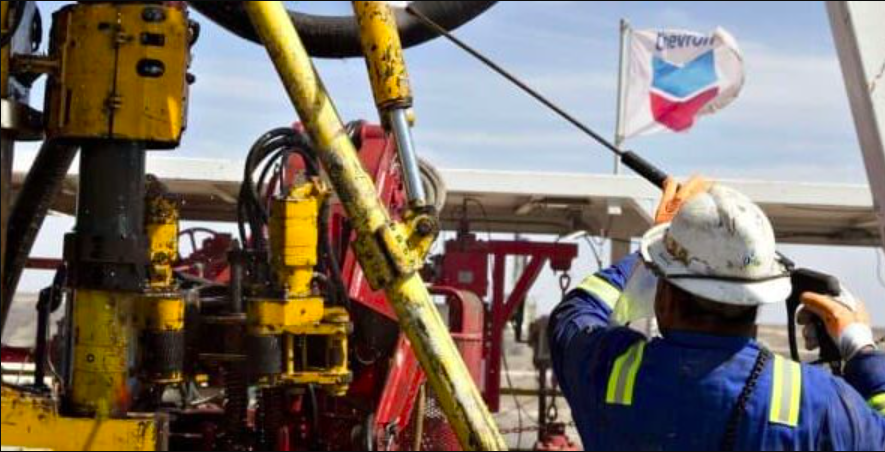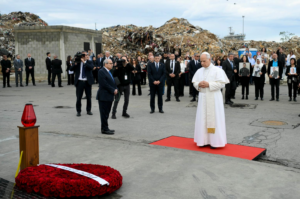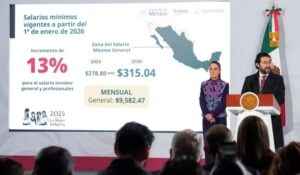
Posted 24/03/2025 16:33 | Edited 24/03/2025 17:33
United States President Donald Trump announced on Monday that any country that buying Venezuela’s oil or gas will pay a 25% tariff about the US negotiations. According to Trump, this “secondary rate” will come into force on April 2. The statement was made through a publication on the Social Truth, the Republican social network.
Without evidence, Trump justified the measure by accusing Venezuela of sending “tens of thousands of criminals” to the US, including members of the gang “Tren de Aragua”. He also stated that the government of Nicolás Maduro has been “hostile to the US and freedoms” defended across the country.
“Therefore, any country that buys Venezuela’s oil and/or gas will be forced to pay a 25% tariff to the United States in any trade with our country,” Trump wrote.
The measure arises after Trump suspends, earlier this month, for 30 days, a license that the US had granted to Chevron since 2022 to operate in Venezuela and export its oil. At the time, the far-right president alleged a lack of advancement in Venezuelan electoral reforms and the return of migrants to the South American country.
BIDEN’s strategy
Biden’s strategy was to allow Chevron to recover its debt while limiting cash flows to the Maduro government. Many foreign policy analysts have argued that sanctions can act as a weapon of “shock and dread” but that they lose effectiveness over time as target states gradually adapt.
With Trump’s announcement, oil prices in the international market rose 1%.
Flexibility signs on reciprocal tariffs
Despite the decision to impose new rates on countries negotiating with Venezuela, the international press has indicated that Trump can adopt a more flexible stance with specific sectors in the imposition of reciprocal tariffs. The Republican President promised in February to increase US tariffs to reduce the global deficit of $ 1.2 trillion in goods trade.
A tall Trump government official stated on Monday that the situation is fluid and that no final decision has been made. The president himself will ultimately define the content of the announcement of April 2, a date he has called “release day” to the US economy.
Trump intends to impose 25% tariffs on imported pharmaceutical cars, semiconductors and pharmaceutical products, but has already indicated that it can postpone some of these rates due to pressure from large US companies. In February, the president agreed to postpone the imposition of car tariffs after pressure from the three largest US automakers.
O Wall Street Journal and Bloomberg They reported that some rates should be postponed, citing government sources. Trump’s strategy has been marked by threats, reversals and delays, while his commercial team formulates policies quickly.
So far, Trump has imposed 20% rates on Chinese imports, has restored 25% tariffs on globally imported steel and aluminum, and has established tariffs on trade with Canada and Mexico in cases of non -compliance with commercial agreements.
Who will be affected by reciprocal tariffs?
Treasury Secretary Scott Bessent and White House’s main economic advisor Kevin Hassett said last week that April 2’s announcement should focus on a restricted set of countries with the largest commercial surpluses and tariff barriers. According to Bessent, these countries are called “15 dirty,” while Hassett mentioned a group between 10 and 15 countries.
The US Representative Office has listed 21 countries that can be affected, including Argentina, Australia, Brazil, Canada, China, European Union, India, Indonesia, Japan, South Korea, Malaysia, Mexico, Russia, Saudi Arabia, South Africa, Taiwan, Tailândia, Türkiye, United Kingdom and Vietnam. Together, these countries represent 88% of the total US goods trade.
In a scenario of total sanctions, even large Chinese companies have moved away from Venezuelan oil. But there are always buyers arranged in black markets or “gray” at a low enough price. PDVSA still exports part of its gross oil via Malaysia, where it is renamed, and then to China. However, his participation has fallen in the last two years, as more US, European and Indian buyers have been authorized by the Office of Foreign Assets Control of the US Treasury to enter the market.
Asdrubal Oliveros, a Venezuelan economist, argued in a radio interview that 85% of the nation’s income comes from oil exports, which would be about $ 15 billion. “The net effect [da remoção da Licença Geral 41 fornecida à Chevron] is that the country would lose $ 3.1 billion this year. ”
The expectation is now focused on Trump’s announcement on April 2, which can redefine global trade and intensify US commercial disputes with its main partners.
Source: vermelho.org.br

